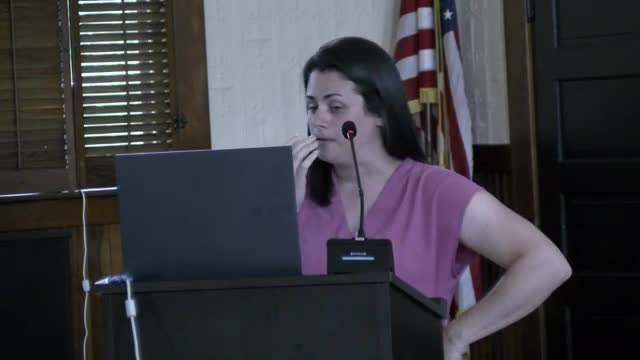Swansea Lake faces critical water quality crisis
August 20, 2024 | West Swanzey, Cheshire County, New Hampshire

This article was created by AI summarizing key points discussed. AI makes mistakes, so for full details and context, please refer to the video of the full meeting. Please report any errors so we can fix them. Report an error »

Swansea Lake is facing significant environmental challenges, particularly concerning low oxygen levels and increasing nutrient pollution, as discussed in a recent government meeting. During the summer months, the lake's deepest areas experience critical oxygen depletion, which threatens the survival of sensitive cold-water fish species. This situation is exacerbated by the release of phosphorus from bottom sediments, which can lead to harmful algal blooms, including cyanobacteria.
The meeting highlighted a troubling trend of increased aquatic plant growth and filamentous algae along the shoreline, indicating excess nutrient issues. This phenomenon is not isolated to Swansea Lake; it reflects a broader pattern observed across the state. Additionally, the lake has seen rising chloride levels, primarily from winter road salt and water softening systems, which disrupts local ecosystems and degrades water quality.
Recent severe storms and flash floods have further complicated the situation, introducing nutrient-laden sediment into the lake and worsening oxygen depletion. The data collected post-storm indicated a significant decline in oxygen levels compared to previous years, raising concerns that these extreme weather events may have altered the lake's water quality trajectory permanently.
The meeting underscored the importance of addressing these environmental issues through a comprehensive watershed management plan. Recommendations include assessing the impacts of recent changes and mitigating phosphorus loading from various sources, such as construction, agriculture, and shoreline erosion. The ongoing effects of climate change, including warmer temperatures and unpredictable precipitation patterns, are expected to exacerbate these challenges, making it crucial for stakeholders to act swiftly to protect Swansea Lake's water quality and aquatic life.
The meeting highlighted a troubling trend of increased aquatic plant growth and filamentous algae along the shoreline, indicating excess nutrient issues. This phenomenon is not isolated to Swansea Lake; it reflects a broader pattern observed across the state. Additionally, the lake has seen rising chloride levels, primarily from winter road salt and water softening systems, which disrupts local ecosystems and degrades water quality.
Recent severe storms and flash floods have further complicated the situation, introducing nutrient-laden sediment into the lake and worsening oxygen depletion. The data collected post-storm indicated a significant decline in oxygen levels compared to previous years, raising concerns that these extreme weather events may have altered the lake's water quality trajectory permanently.
The meeting underscored the importance of addressing these environmental issues through a comprehensive watershed management plan. Recommendations include assessing the impacts of recent changes and mitigating phosphorus loading from various sources, such as construction, agriculture, and shoreline erosion. The ongoing effects of climate change, including warmer temperatures and unpredictable precipitation patterns, are expected to exacerbate these challenges, making it crucial for stakeholders to act swiftly to protect Swansea Lake's water quality and aquatic life.
View full meeting
This article is based on a recent meeting—watch the full video and explore the complete transcript for deeper insights into the discussion.
View full meeting
